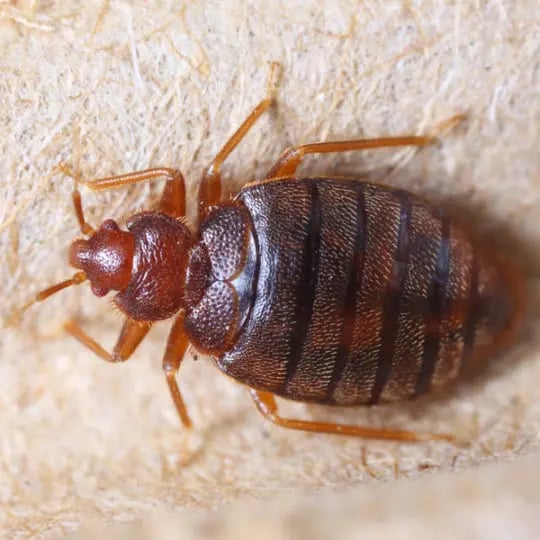Professional Bed Bug Exterminator: DC Solutions and Heat Treatment
Wiki Article
Exploring the Scientific Research Behind Bed Insect Warmth Treatments as a Lasting Parasite Administration Strategy
In the realm of insect administration, the mission for sustainable and efficient options remains a continuous search. One such approach that has obtained grip recently is using warmth therapies to battle bed bug problems. By harnessing the scientific research behind thermal death factors for these relentless pests, warm treatments supply a promising alternative to traditional chemical-based techniques. The intricacies of just how warmth effectively eliminates bed pests and the broader effects for sustainable insect monitoring practices make this a subject worth discovering further.Bed Insect Warm Therapy Process

Thermal Fatality Factor for Bed Bugs
Exposing bed pests to elevated temperatures past their thermal tolerance array is vital for achieving reliable elimination in warmth therapy processes. By reaching and preserving temperature levels above the thermal fatality factor for bed insects, pest monitoring experts can ensure comprehensive elimination of bed bug populations, including hard-to-reach locations where chemical therapies may be less reliable. Comprehending the thermal death factor for bed insects is vital for carrying out successful heat treatment techniques and achieving sustainable bug administration results.Advantages of Warm Treatments
Having developed the crucial thermal death factor for bed pests, it is imperative to now check out the significant advantages that warmth treatments offer in properly removing these resilient bugs. Warmth treatments present several key advantages when compared to typical chemical techniques. One of the primary benefits is that warmth can penetrate deep into fractures and gaps where bed insects conceal, making sure that even one of the most hard-to-reach areas are warmed to lethal temperatures. This detailed strategy not only kills real-time insects but additionally targets bed insect eggs, preventing future infestations.In addition, heat therapies are safe and eco-friendly, making them a sustainable pest management strategy. Unlike chemical pesticides, heat therapies do not leave hazardous residues that can position threats to human health or the atmosphere. This facet is particularly vital in delicate environments such as health centers, colleges, and suburbs where chemical use may not be preferable.
Furthermore, warm therapies have a high success rate in eliminating bed bug invasions in a solitary therapy, lowering the requirement for numerous brows through and decreasing disturbance to occupants. This performance not just saves time and cash however likewise provides tranquility of mind to those handling bed insect issues.
Performance of Warm Treatment

Warmth treatments have the added benefit of eliminating bed bug eggs, which are frequently resistant to standard chemical treatments. Overall, the efficiency of warm therapies in eradicating you could try these out bed pest infestations makes them a trustworthy and lasting insect administration strategy.
Sustainable Bug Administration Benefits
Applying lasting pest management methods offers long-lasting advantages for both the environment and public wellness. By utilizing approaches such as warm therapies for pest control, we can lower the reliance on dangerous chemical pesticides that can have adverse impacts on ecological communities and human wellness - DC exterminator. Lasting bug administration approaches assist in preserving biodiversity by targeting particular parasites without damaging non-target microorganisms, thus preserving a well balanced environment
In addition, sustainable bug monitoring practices add to the total health and health of the general public. By lessening direct exposure to hazardous chemicals used in conventional parasite control approaches, warm treatments supply a safer alternative for insect monitoring in property, commercial, and public spaces. This reduction in chemical usage also helps in stopping pesticide residues from contaminating soil, air, and water, protecting environmental quality.
Conclusion
Finally, bed pest heat therapies have been revealed to be a efficient and lasting parasite administration strategy. The thermal death factor for bed pests makes them vulnerable to warm therapies, which have many benefits over traditional chemical therapies. The efficiency of heat therapies in getting rid of bed insect invasions while decreasing ecological influence highlights the potential of this method as a sustainable option for parasite control.The bed insect warmth therapy process involves more information increasing the temperature level within ravaged locations to a level that effectively eliminates bed bugs and their eggs. By getting to and preserving temperature levels above the thermal death factor for bed pests, pest administration specialists can ensure thorough elimination of bed insect populaces, including hard-to-reach locations where chemical therapies may be much less efficient. One of the main benefits is that warmth can pass through deep into gaps and fractures where bed pests conceal, making certain that also the most hard-to-reach areas are warmed to dangerous temperatures. Unlike chemical treatments that might leave behind resistant populaces, warm treatments offer a safe and environmentally pleasant solution that can penetrate deep right into furniture, wall surfaces, and various other hard-to-reach areas where bed pests conceal.
The thermal death factor for bed pests makes them at risk to warmth treatments, which have numerous advantages over typical chemical therapies.
Report this wiki page